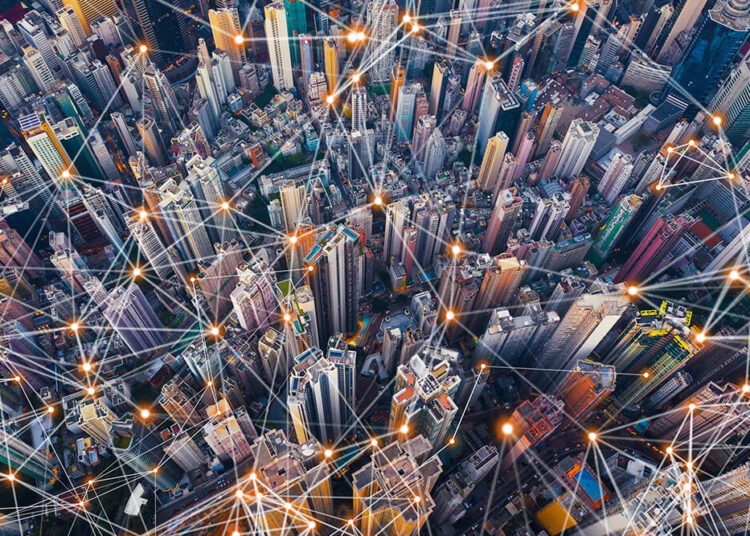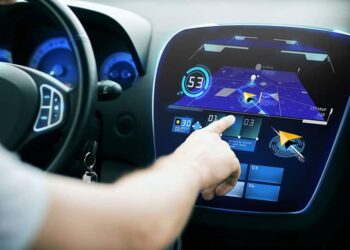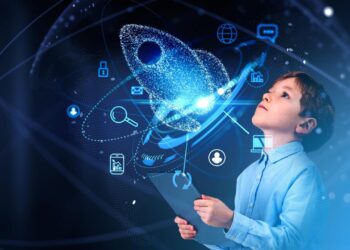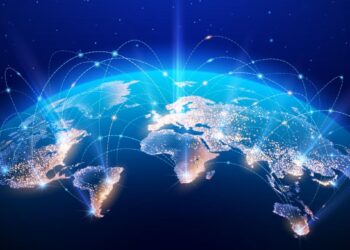In an era defined by relentless technological progress, the future isn’t a distant concept but a tangible reality unfolding before our very eyes. From the intricate circuits of advanced microprocessors to the boundless potential of artificial intelligence, groundbreaking innovations are continuously emerging, fundamentally reshaping how we live, work, and interact with the world. This comprehensive exploration delves into the most compelling and transformative technological advancements that are not merely concepts but active forces driving the next wave of human evolution. We’ll uncover how these pioneering solutions are poised to redefine industries, enhance daily experiences, and push the boundaries of what was once considered science fiction.
The Dawn of Hyper-Intelligent Systems
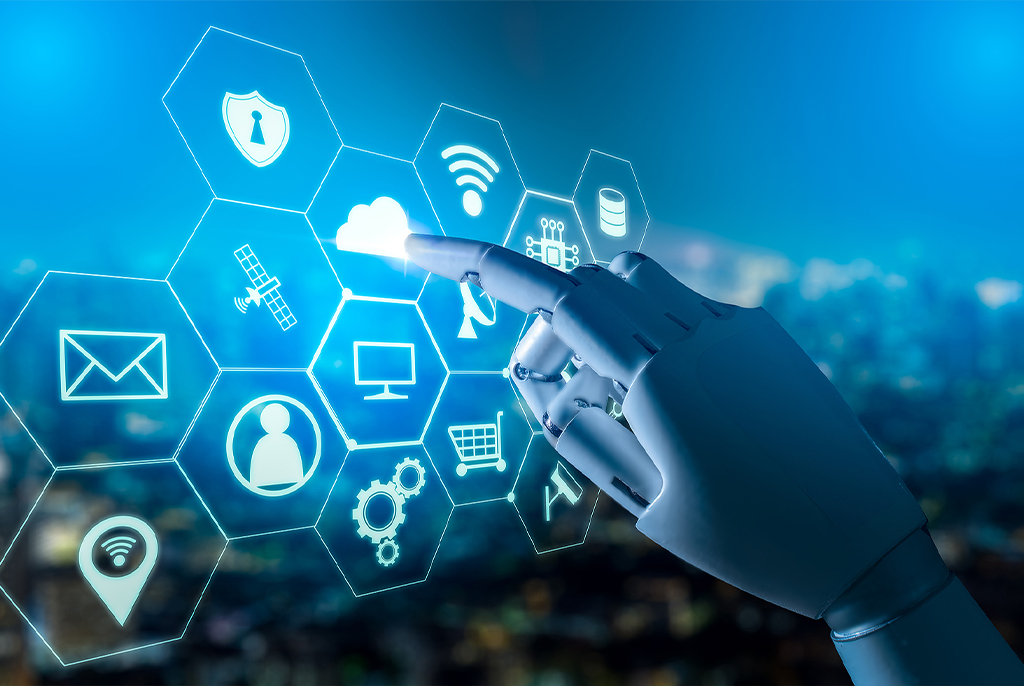
Artificial Intelligence (AI) has transcended its foundational stages, evolving into hyper-intelligent systems capable of unprecedented analytical depth and decision-making prowess. This isn’t just about automating repetitive tasks; it’s about creating cognitive entities that can learn, adapt, and even anticipate complex scenarios.
A. Deep Learning’s Unbounded Potential: At the core of much of this advancement lies deep learning, a subset of machine learning inspired by the human brain’s neural networks. These complex algorithms can process vast amounts of data, recognize intricate patterns, and make highly accurate predictions. From medical diagnostics where AI can detect anomalies imperceptible to the human eye, to financial markets where algorithms predict stock movements with remarkable precision, deep learning is catalyzing revolutions across diverse sectors. Its ability to extract meaningful insights from unstructured data – be it images, sounds, or text – is unlocking new frontiers in research and application.
B. Generative AI: Creating the Unseen: A particularly fascinating development is generative AI, systems capable of creating entirely new content, designs, and even concepts. This ranges from AI-generated art and music that challenge human creativity, to sophisticated models that can design new molecules for drug discovery or engineer novel materials with specific properties. Imagine AI assisting architects in designing more sustainable buildings, or helping fashion designers conceptualize unique apparel. This creative capability pushes AI beyond mere analysis into true innovation.
C. Ethical AI and Bias Mitigation: As AI becomes more ubiquitous, the ethical implications and potential for bias are paramount concerns. Developers are increasingly focusing on creating “explainable AI” (XAI) – systems that can clarify their decision-making processes, enhancing transparency and trust. Furthermore, significant efforts are being made to identify and mitigate algorithmic bias, ensuring that AI systems are fair, equitable, and do not perpetuate societal prejudices encoded within their training data. This commitment to ethical AI is crucial for its responsible integration into society.
D. AI in Robotics: The Future of Automation: The synergy between AI and robotics is particularly compelling. Advanced AI algorithms are giving robots enhanced perception, mobility, and decision-making capabilities, allowing them to perform complex tasks in unpredictable environments. From autonomous warehouse robots optimizing logistics to surgical robots assisting intricate medical procedures, and even humanoid robots designed for companionship or hazardous exploration, AI is making robots smarter, more versatile, and indispensable across industrial and domestic settings.
Immersive Realities
The evolution of virtual reality (VR), augmented reality (AR), and mixed reality (MR) is ushering in an era where digital content seamlessly merges with our physical world, transforming entertainment, education, and professional collaboration.
A. Virtual Reality’s Deep Dive: VR continues to mature, offering increasingly lifelike and immersive experiences. Beyond gaming, VR is revolutionizing training simulations for pilots, surgeons, and emergency responders, providing realistic environments for practice without real-world risks. In education, VR field trips can transport students to ancient civilizations or distant galaxies, making learning more engaging and impactful. The development of haptic feedback suits and omnidirectional treadmills further enhances the sensory experience, blurring the lines between the virtual and the real.
B. Augmented Reality’s Practical Integration: AR overlays digital information onto the real world, enhancing our perception without fully isolating us. Think of AR navigation systems projected onto your car’s windshield, displaying turn-by-turn directions directly on the road ahead. In retail, AR apps allow customers to virtually “try on” clothes or place furniture in their homes before purchasing. For industrial applications, AR provides technicians with real-time instructions and diagnostic overlays directly on machinery, improving efficiency and reducing errors. The advent of lighter, more comfortable AR glasses promises a future where digital assistance is a constant, subtle overlay on our reality.
C. Mixed Reality’s Hybrid Worlds: MR takes the best of both VR and AR, allowing digital objects to interact with the physical environment and vice versa. This creates truly hybrid realities where users can manipulate virtual objects as if they were tangible, or have digital characters move around physical furniture. MR has immense potential for collaborative design, remote work, and interactive entertainment, enabling shared digital experiences in physical spaces. Imagine architects collaborating on a 3D model that floats in their conference room, or doctors consulting on a virtual patient projected onto a real operating table.
D. The Metaverse: A Unified Digital Frontier: The concept of the “metaverse” represents the ultimate convergence of these immersive technologies – a persistent, interconnected virtual world where users can socialize, work, shop, and create. While still in its nascent stages, the vision is of a digital ecosystem where digital avatars traverse seamlessly between virtual spaces, owning digital assets, and participating in a thriving virtual economy. This ambitious undertaking promises to redefine social interaction and commerce, creating entirely new paradigms for human connection and economic activity.
The Connectivity Revolution
Connectivity is the lifeline of modern technology, and advancements beyond 5G are paving the way for truly ubiquitous and instantaneous global communication, powering everything from smart cities to the Internet of Things (IoT).
A. 5G’s Transformative Impact and Beyond: While 5G is still being rolled out globally, its impact is already profound, offering unprecedented speeds, ultra-low latency, and massive capacity. This enables real-time critical communications for autonomous vehicles, supports the proliferation of IoT devices, and facilitates high-definition streaming and immersive VR experiences. Looking ahead, discussions around 6G and even further generations promise terabit-per-second speeds, holographic communications, and truly pervasive connectivity that could blanket entire regions.
B. Satellite Internet: Bridging the Digital Divide: Projects like Starlink and OneWeb are rapidly expanding access to high-speed internet, particularly in remote and underserved areas, using constellations of low-earth orbit (LEO) satellites. This global coverage promises to bridge the digital divide, empowering communities that were previously excluded from the benefits of online education, healthcare, and economic opportunities. This democratized access to information and resources is a monumental step towards global equity.
C. Internet of Things (IoT) Evolution: The IoT continues to expand, with an ever-increasing number of everyday objects embedded with sensors and connectivity, generating vast amounts of data. From smart homes that anticipate your needs to intelligent cities optimizing traffic flow and energy consumption, and industrial IoT solutions streamlining manufacturing processes, these interconnected devices are creating truly responsive and efficient environments. The challenge lies in managing and securing this massive network, ensuring data privacy and system integrity.
D. Edge Computing: Processing Power at the Source: To handle the immense data generated by IoT and other connected devices, edge computing is gaining prominence. Instead of sending all data to centralized cloud servers for processing, edge computing brings computation closer to the source of the data, reducing latency and bandwidth usage. This is critical for applications requiring real-time responses, such as autonomous vehicles, industrial automation, and live video analytics. It enhances efficiency, security, and reliability across interconnected systems.
Sustainable Innovations
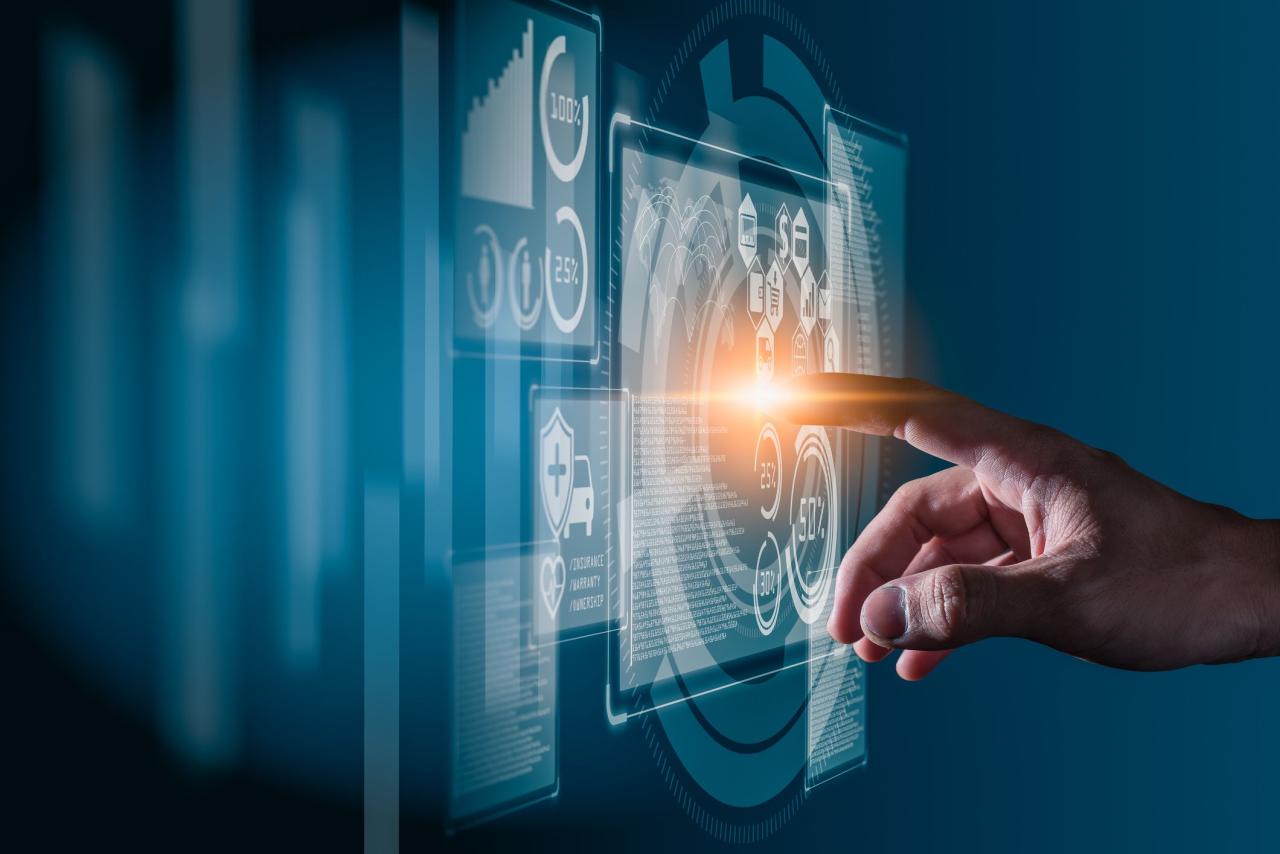
Amidst all the technological marvels, there is a growing imperative to harness innovation for environmental sustainability and a more resilient future. Technology is becoming a powerful tool in addressing global challenges like climate change, resource depletion, and pollution.
A. Renewable Energy Advancements: Breakthroughs in solar panel efficiency, wind turbine technology, and energy storage solutions (like advanced battery chemistries and grid-scale storage) are making renewable energy sources more viable and cost-effective than ever before. Smart grids, powered by AI, optimize energy distribution and integrate diverse renewable sources, paving the way for a fully sustainable energy future.
B. Circular Economy Technologies: New technologies are supporting the transition to a circular economy, where waste is minimized, and resources are reused, repaired, and recycled. This includes advanced recycling robotics, material science innovations that create more sustainable and biodegradable materials, and platforms that facilitate product sharing and repair. Digital twins and blockchain technology can also track product lifecycles, improving transparency and efficiency in resource management.
C. Precision Agriculture and Food Tech: Technology is transforming food production, making it more efficient and environmentally friendly. Precision agriculture uses IoT sensors, AI analytics, and drones to optimize irrigation, fertilization, and pest control, reducing resource waste and increasing yields. Vertical farming and cellular agriculture (cultivating meat and dairy in labs) offer sustainable alternatives to traditional farming, reducing land and water usage and minimizing environmental impact.
D. Environmental Monitoring and Conservation: Sophisticated sensors, satellite imagery, and AI algorithms are being used to monitor environmental changes, track pollution levels, and protect endangered species. From early warning systems for natural disasters to AI-powered platforms identifying illegal deforestation, technology provides critical tools for conservation efforts and mitigating the impacts of climate change.
The Human-Technology Interface
The way we interact with technology is undergoing a profound transformation, moving beyond screens and keyboards to more intuitive, natural, and even symbiotic relationships.
A. Brain-Computer Interfaces (BCI): Direct Thought Control: BCIs represent the ultimate frontier in human-computer interaction, allowing direct communication between the brain and external devices. While still largely in experimental stages, BCIs hold immense promise for assisting individuals with disabilities, restoring lost motor functions, and even enhancing human cognitive abilities. Imagine controlling a prosthetic limb with thought, or navigating a digital interface purely through mental commands.
B. Advanced Haptics and Sensorial Feedback: Beyond visual and auditory experiences, haptic technology is evolving to provide realistic tactile feedback, allowing us to “feel” digital objects and environments. This enhances immersion in VR/AR, provides crucial feedback in surgical robots, and creates more intuitive interfaces for smart devices. The development of olfactory and gustatory interfaces also hints at a future where our digital experiences engage all five senses.
C. Wearable Technology’s Intelligent Evolution: Wearable devices are becoming increasingly sophisticated, moving beyond fitness tracking to provide comprehensive health monitoring, real-time feedback, and seamless integration with our digital lives. Smartwatches, intelligent rings, and even smart fabrics are continuously collecting data, offering personalized insights into our well-being and seamlessly connecting us to information and services.
D. Voice and Gesture Control: Natural Interaction: Voice assistants and gesture control systems are becoming more sophisticated and ubiquitous, offering natural and intuitive ways to interact with technology. As AI models for natural language processing improve, conversations with machines will become more fluid and context-aware. Gesture recognition allows for touchless interaction, opening up possibilities for control in sterile environments or for individuals with mobility limitations.
Challenges and Opportunities
While the pace of technological advancement is exhilarating, it also presents a myriad of challenges and opportunities that must be navigated with foresight and responsibility.
A. Data Privacy and Security: As more of our lives become digitized and interconnected, ensuring the privacy and security of vast amounts of personal and sensitive data is paramount. Robust cybersecurity measures, ethical data governance frameworks, and user empowerment are essential to building trust in these new technologies.
B. Ethical Considerations and Regulation: The rapid development of AI, genetic engineering, and autonomous systems raises profound ethical questions. Societies must grapple with issues like algorithmic bias, job displacement, the definition of consciousness, and the responsible use of powerful technologies. Thoughtful regulation and international cooperation will be crucial in guiding their development for the common good.
C. Digital Divide and Accessibility: While technology offers immense benefits, there is a risk of exacerbating the digital divide if access remains unequal. Efforts must be made to ensure that these transformative technologies are accessible and affordable for all, preventing a scenario where a significant portion of the global population is left behind.
D. Reskilling and Education: The automation and disruption brought by new technologies will necessitate a significant focus on reskilling and lifelong learning. Educational systems must adapt to prepare the workforce for future jobs, fostering creativity, critical thinking, and adaptability in an ever-changing technological landscape.
E. Interoperability and Standardization: As different technologies and platforms emerge, ensuring their interoperability and establishing common standards will be vital for seamless integration and widespread adoption. This requires collaboration among industry players, governments, and international bodies to create a cohesive technological ecosystem.
Conclusion
In conclusion, the innovations being unveiled now are not just incremental improvements; they are foundational shifts that promise to redefine human potential and societal structures. From hyper-intelligent AI and immersive realities to ubiquitous connectivity and sustainable solutions, the trajectory of technological progress is undeniable. While challenges remain, the opportunities for a more efficient, interconnected, and ultimately, a better world, driven by these groundbreaking advancements, are immense. Embracing these changes with an informed, ethical, and forward-looking perspective will be key to harnessing their full transformative power for the benefit of all humanity.

